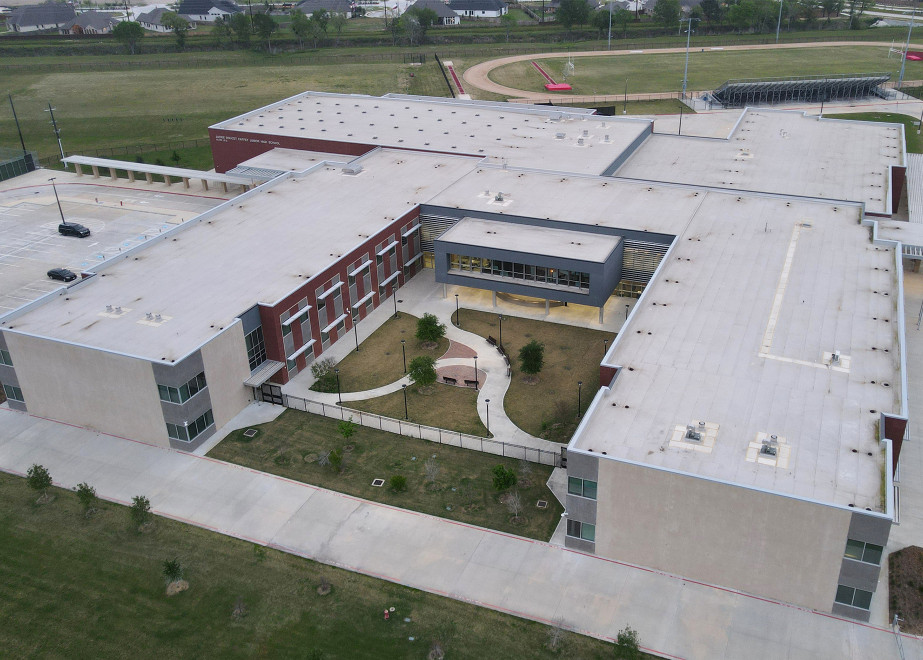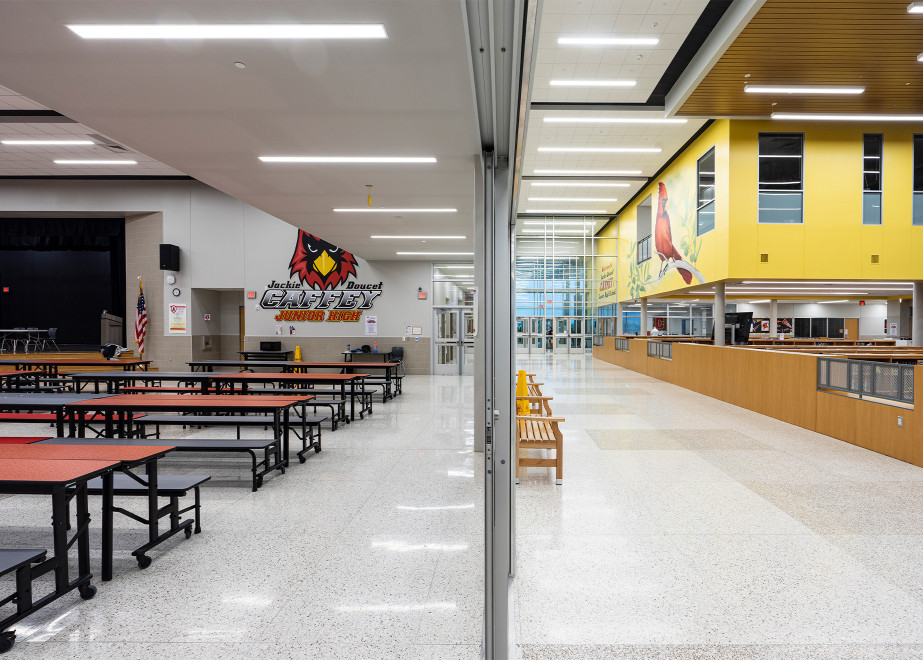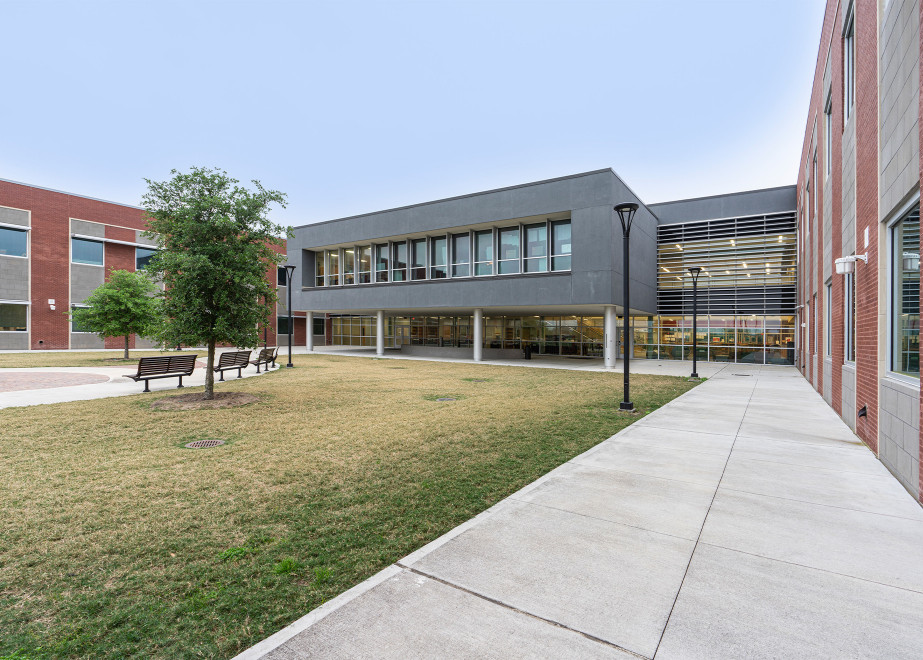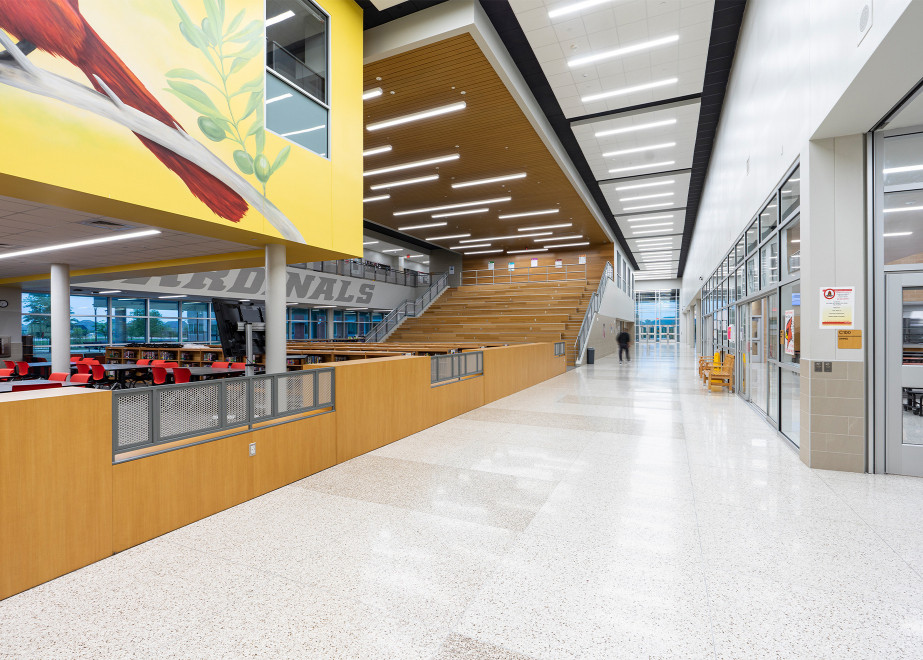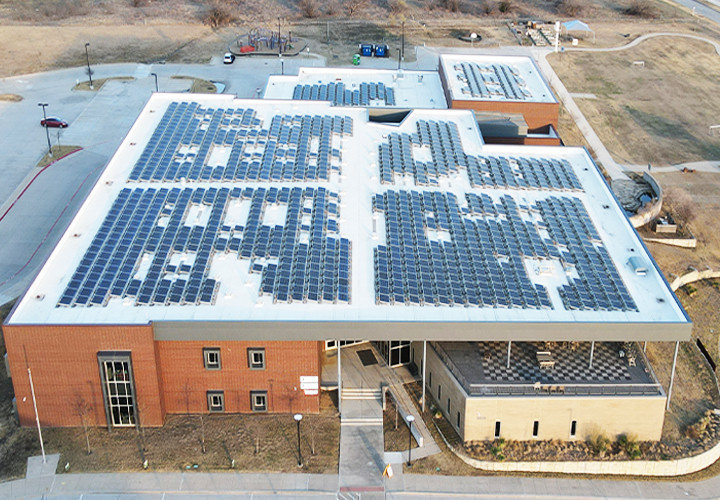The Solutions
The new, state-of-the-art facility includes 38 standard classrooms, as well as science labs, fine arts classrooms, two gymnasiums, an administration suite, and a library that features a learning stair for large group instruction and community events. Delivering an energy-efficient building was not merely a goal but a directive from the owner, who aimed to exceed IECC 2015 and ASHRAE 90.1-2016 standards. To achieve this, CMTA conducted a comprehensive review of similar junior high schools in the district to identify key energy efficiency improvements. Based on the review, the team focused on optimizing the facility’s outside air system and lighting design.
Outdoor air is delivered via two dedicated outdoor air units, each equipped with a total energy recovery wheel, hydronic preheat coil, chilled water coil, face and bypass dampers, and outside air/exhaust air fans. The outside air from this unit is ducted directly to many spaces, increasing the delivery efficiency, and reducing the total outside air delivered by approximately 25% over traditional systems. This delivery method saves on system equipment sizes (i.e., outdoor air, boilers, and chillers) and energy consumption without compromising the classrooms’ indoor air quality (IAQ).
Additionally, the design team selected 100% LED lighting for the building, reducing lighting power and cooling energy. CMTA ran lighting calculations to right-size the system to appropriately light, but not over-light, spaces, analyzing the performance of specific light fixtures to ensure that high-lumen, high-efficacy fixtures were implemented. Utilizing these types of fixtures not only lowers the energy density of the lighting system but also prove more cost-effective, as fewer high-performing fixtures are needed to achieve superior lighting outcomes. As a result, the building achieved an internal lighting density of 0.46 W/ft², a remarkable 47% reduction from the allowable code.
Alongside the project’s efficiency goals, Alvin ISD wanted to ensure the building was easy to operate and maintain. The district’s existing building portfolio was predominantly equipped with chilled water systems, a technology their maintenance personnel were familiar with and could efficiently manage. Leveraging this existing expertise, CMTA embraced the owner’s proficiency with these systems and provided the most efficient design without introducing systems that would be overly complex or cumbersome to maintain.
